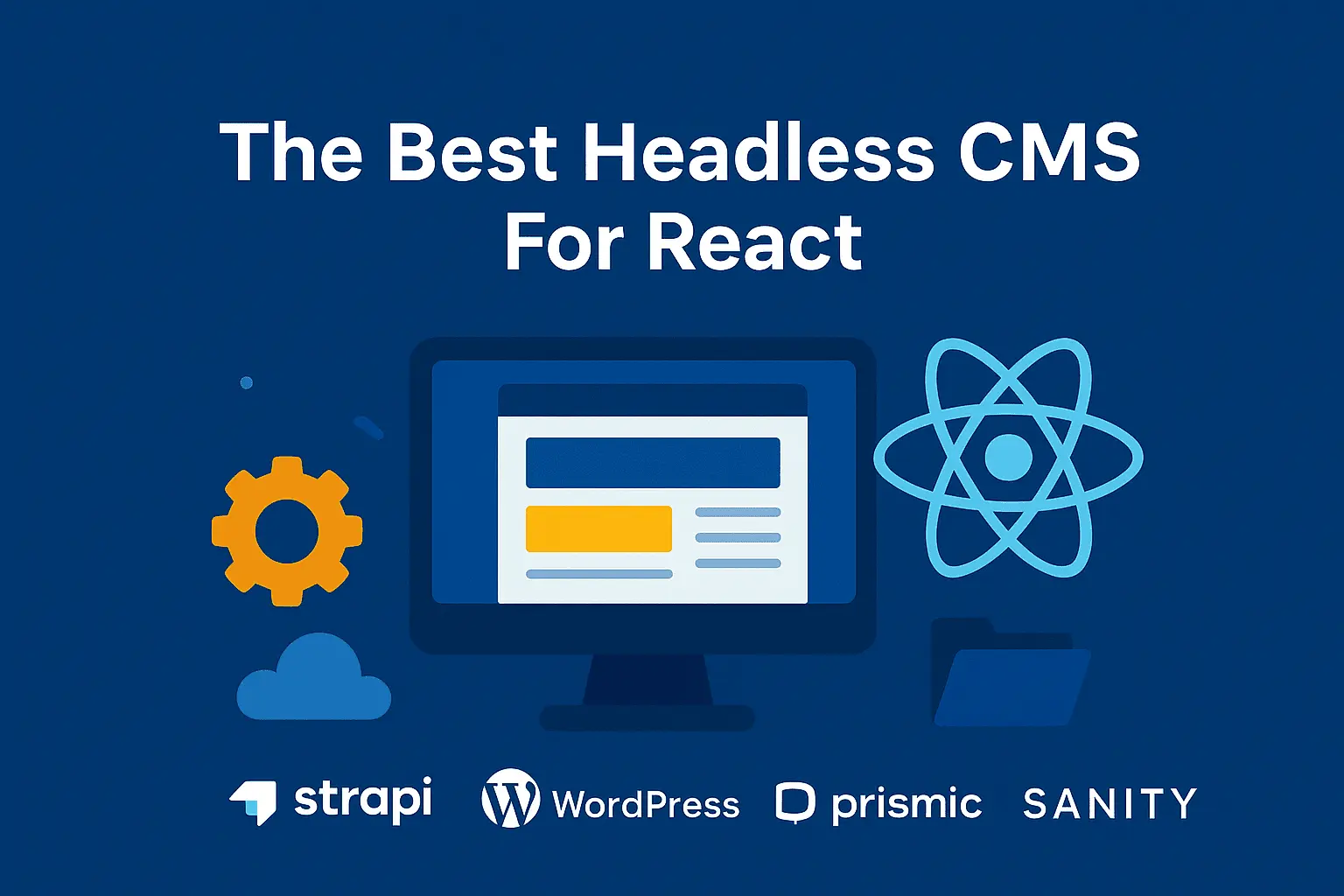Introduction
A “headless CMS for React” is a content management system where the content repository (backend) is decoupled from the presentation layer (frontend). The CMS exposes content via APIs (REST or GraphQL) and the frontend (here: React) fetches & renders it.
Why use a headless CMS in a React project? Because it lets you:
- Use a modern frontend stack (React, Next.js, Gatsby, etc) for UI/UX flexibility.
- Change or upgrade frontend without migrating content.
- Deliver content to multiple channels (web, mobile, IoT) from the same backend.
- Often benefit from faster performance (via static generation, CDNs) and better architecture separation.
Choosing the best CMS for React means balancing developer experience, editor usability, pricing, scalability, and hosting options.
What to Evaluate Before Choosing a Headless CMS for React
- Content modelling/flexibility: How easily can you define custom content types, fields, relationships? Does the CMS support blocks/components (which align nicely with React components)?
- API options & developer experience: Does it offer REST and/or GraphQL? How good is the SDK or integration with React? How strong is the documentation and community?
- Editor/UX for non-developers: How easy is it for content editors? Visual preview, inline editing, workflow, versioning.
- Hosting / infrastructure / self-hosting vs SaaS: Some CMS are self-hosted (gives more control) vs managed SaaS (gives convenience). Which is your use-case?
- Performance / delivery / multi-channel: How is the content delivered? Via CDN? How do previews work? Multi-language/localisation support?
- Cost / pricing scheme & scaling: Free tier availability, pricing for more users/API requests, enterprise support.
- Team size / workflow / editorial features: Does your team require collaboration, roles/permissions, scheduled publishing?
- Integration with your frontend stack: React is main, but maybe also Next.js/Gatsby/Remix etc. How smooth is the integration?
Top Headless CMS options for React
Here are some of the best ones, each with strengths and trade-offs. You can pick 3-5 to feature in detail.
Sanity
- One of the most flexible and developer-friendly headless CMS.
- Real-time collaboration, “Portable Text” (rich structured text) support.
- Strong for projects where you need custom content models, and where developers are comfortable with setup.
Trade-off: Might require more setup/configuration; learning curve is higher vs simpler systems.
Storyblok
- Visual editor + component-based content blocks align well with React’s component model.
- Good choice if you want content editors to have preview/live-editing capabilities.
Trade-off: Perhaps less “raw developer control” than fully open systems; pricing may scale up.
Strapi
- Strapi CMS development is an open-source, self-hosted React CMS option.
- Good if you want full control over backend, hosting, database, plugins, and you have dev-ops services.
Trade-off: Self-hosting means you handle infrastructure; may involve more maintenance.
Hygraph (formerly GraphCMS)
- GraphQL-native headless CMS explicitly presented as a “React CMS” solution.
- Great if your stack uses GraphQL heavily and you want precise queries/data fetching.
Trade-off: Might have steeper learning for teams unfamiliar with GraphQL; pricing model may differ.
Prismic
- Known for user-friendly interface, slices/content blocks concept that fits with component-based frontend.
- Good for marketing sites, blogs, and smaller teams wanting ease of content editing.
Trade-off: Possibly less customization than developer-heavy options; evaluate features carefully.
Contentful
- Mature, enterprise-grade headless CMS for React; strong in content modelling, asset management, localization.
- Good for projects where scale, localization, many content editors, asset/media heavy content matter.
Trade-off: Pricing can become high; may include features you may not need for a simple blog.
WordPress (Headless)
- A traditional CMS development that can also be used in a headless setup via the REST API or WPGraphQL plugin.
- Familiar interface, huge plugin ecosystem, and easy content editing make it a good option for teams already using WordPress.
- Strong for projects where you want to keep the WordPress admin/editor experience but modernize the frontend with React, Next.js, or Gatsby.
Trade-off: Requires extra setup for headless configuration (e.g., preview, authentication, CORS), and you still manage WordPress updates, plugins, and hosting.
Conclusion
For a React-based blog, you have many strong choices. If you just want to launch quickly, pick something with minimal setup and good editor UX (e.g., Storyblok or Prismic). If you’re building something that might grow into a content platform, go with something more flexible/developer-centric (Sanity, Strapi).

